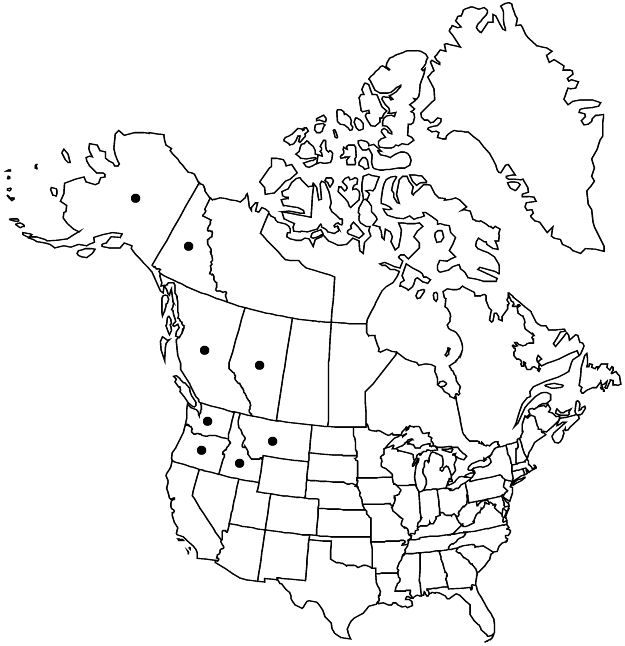Difference between revisions of "Rubus pedatus"
Pl. Icon. Ined. 3: plate 63. 1791.
FNA>Volume Importer |
FNA>Volume Importer |
(No difference)
| |
Revision as of 23:13, 16 December 2019
Herbs, to 1 dm, unarmed. Stems creeping, flowering branches erect, sparsely hairy, eglandular or sparsely stipitate-glandular, not pruinose. Leaves deciduous, pedately compound; stipules broadly ovate to suborbiculate, 2–3 mm; leaflets 3 (often appearing as if 5), lateral leaflets deeply lobed, sinuses nearly to leaflet base, terminal obovate to obovate-rhombic, (1–)1.5–2.5(–3.4) × (0.8–)1.2–2(–2.5) cm, base cuneate, margins coarsely singly or doubly serrate, apex rounded to obtuse, abaxial surfaces glabrous or sparsely hairy on midvein, eglandular or sparsely stipitate-glandular. Inflorescences 1-flowered. Pedicels sparsely hairy, eglandular or sparsely stipitate-glandular. Flowers bisexual; petals white, oblong to narrowly obovate, 6–10 mm; filaments filiform; ovaries glabrous, styles glabrous. Fruits red, 0.6–1 cm; drupelets 3–6, weakly coherent, separating from torus. 2n = 14.
Phenology: Flowering Jun–Aug.
Habitat: Coniferous woods, forest edges, glades, meadows, bogs, stream banks, streambeds, roadsides
Elevation: 20–2300 m
Distribution

Alta., B.C., Yukon, Alaska, Idaho, Mont., Oreg., Wash., ne Asia.
Discussion
Rubus pedatus is recognized by its creeping, unarmed stems, pedately 3–5-foliate leaves, relatively small flowers, white petals, and glabrous ovaries.
Selected References
None.